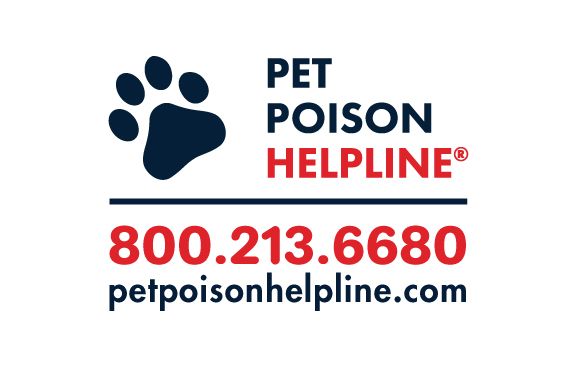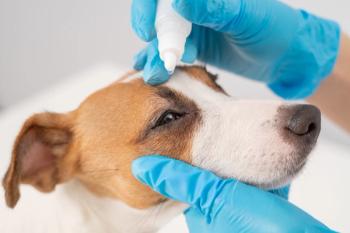
Elite 8 of pet toxins

Help clients protect their favorite teammates this March and beyond by educating them on Pet Poison Helplines’ pet owner fouls
Pet Poison Helpline kicked of Pet Poison Prevention Month by sharing its top 8 pet owner fouls to help veterinary teams educate clients on what is safe for pets to ingest or be given, and what is not. The experts at Pet Poison Helpline analyzed case data to create this list of Elite 8 Pet Owner Fouls.
“As humans, life gets in the way, and we make mistakes now and again. If you make any of these fouls, or your pets get into other things that may be toxic, contact your veterinarian or Pet Poison Helpline immediately,” urged Renee Schmid, DVM, DABT, DABVT, in an organizational release.1 “We’re here to help save your pet’s life when potential trouble arises.”
#1
The first on the elite 8 count down is administering human pain medication to pets. According to Schmid, because no one wants to see their pet in pain, they will commonly reach to the nearest human pain reliever to give them some relief.1 The issue what that is animals are very sensitive to human pain medications, especially NSAIDs like naproxen and ibuprofen with even the smallest amount being potentially deadly in cats.
#2
Coming in at number 2 for the elite 8 is pet parents mixing up human and pet medications. If pet parents are keeping their medications and their pets’ medications in the same place, this can create the opportunity for the wrong medication to be given to pets.
“Do you have a specific place where you store all of the medication in your house?” Schmid asked.1 “If so, you are not alone! Many pet parents will keep their pet’s medication in the same area as their own medication and have been known to give their pet the human medication by mistake. Depending on the type of medication and amount, potentially fatal consequences can occur. This is especially true for skeletal muscle relaxants such as baclofen and heart/blood pressure medications.”
If a pet is at home vomiting, pet owners want to be able to ease the pain the pet is feeling and treat whatever is making them sick. However, if pet parents trying to induce vomiting without the guidance of a veterinary professional, this can severely harm the pet. Schmid warned that instructions to make pets vomit can be found all over the internet but it is not as carefree and easy as these online posts have pet parents believe. There are also products out there that if given to treat vomiting, it can cause more harm to the pet. Schmid expresses that this is particularly true for feline patients.1
“There is never a safe way to induce vomiting in a cat at home so it should only be done under the supervision of a veterinarian using prescription medication that has been proven safe for cats. Dogs may be able to have vomiting induced at home but only under the guidance of a veterinarian or poison expert, as giving too much hydrogen peroxide can cause severe consequences. Manually trying to gag your pet can result in nerve damage to the protective areas of the airway, salt can cause poisoning to your pet, and the myriad of other options you may read about are often dangerous and ineffective,” said Schmid.
#4
Pet parents who are cleaning may not realize the dangers of leaving the cleaner on the floor for a little or leaving the bowl open where pets can get into it. Toilet bowl cleaners, for example, can cause corrosive effects in the esophagus, mouth, and stomach which can lead to severe ulceration and pain.1 The amount ingested and the concentration can potentially be life threatening.
“Cleaners are often poured into the toilet bowl and left to set for a bit to work their magic. If toilet bowl lids aren’t closed, or bathroom doors are left open, our curious furry housemates can find the bottle or water containing toilet bowl cleaner and take a dangerous drink or 2,” explained Schmid.1
#5
The next to making Pet Poison Helpline’s Elite 8 both have to do with garbage to certain extents. Moldy food left in the garbage can may be gross to pet parents, but a sweet temptation to pets. This can be especially true for pet parents cleaning out their refrigerators and maybe not paying attention to their pet looking at the garbage.
“The great refrigerator clean-out often contains moldy food products that we quickly throw in the trash,” said Schmid.1 “These moldy foods may contain tremorgenic mycotoxins that result in ataxia, tremors, and seizures. Deaths can occur. If moldy food is placed in the trash, remember to keep the trash can out of reach of your pets, or better yet, immediately take the trash out of the house and place in a larger, more secure trash receptacle.”
#6
Like moldy food from the fridge, compost piles can be good for the environment but dangerous for pets. Unsupervised access to compost piles can become an unlimited buffet for pets. The food and materials in the pile could also grow the same mold as food left in the fridge for too long. Schmid recommends any pet parents who are using a compost bin to fence it off so pets cannot have any access.
#7
Despite a pet parent’s best efforts, mice and rats make their way into homes. To combat them pet parents could place rat poison, but if they are putting in in places that their pets can have access to, it can be deadly to pets.
If using mouse and rat bait in the same area that a pet is around, be sure to keep the bait far out of the pet’s reach and only use in the bait station supplied by the bait manufacturer. While these don’t eliminate the risk that your curious pet may get into the bait, it can help make access a bit trickier. Also, if bait is not kept in the recommended bait station and left out loosely, it is possible that a rodent can carry the bait to another area that is more easily accessible to your pet,” Schmid explained.1
#8
Topping the Elite 8, drinks that contain alcoholic and caffeine left in reach of pets. When pet parents are putting their drinks down on low tables such as end or coffee tables, pets can ingest these putting themselves in serious risk.
“It’s easy to get distracted while leaving your alcoholic or caffeine-containing beverage on a low table, giving your pet sufficient time to ingest just enough to cause poisoning,” warned Schmid. “Animals do not tolerate alcohol or caffeine in the same manner that people do, and small amounts can be enough to require a trip to the veterinarian, while larger amounts can result in death.”1
Reference
Protecting your pet is no March Madness. News release. Pet Poison Helpline. March 6, 2024. Accessed March 6, 2024.
Newsletter
From exam room tips to practice management insights, get trusted veterinary news delivered straight to your inbox—subscribe to dvm360.




